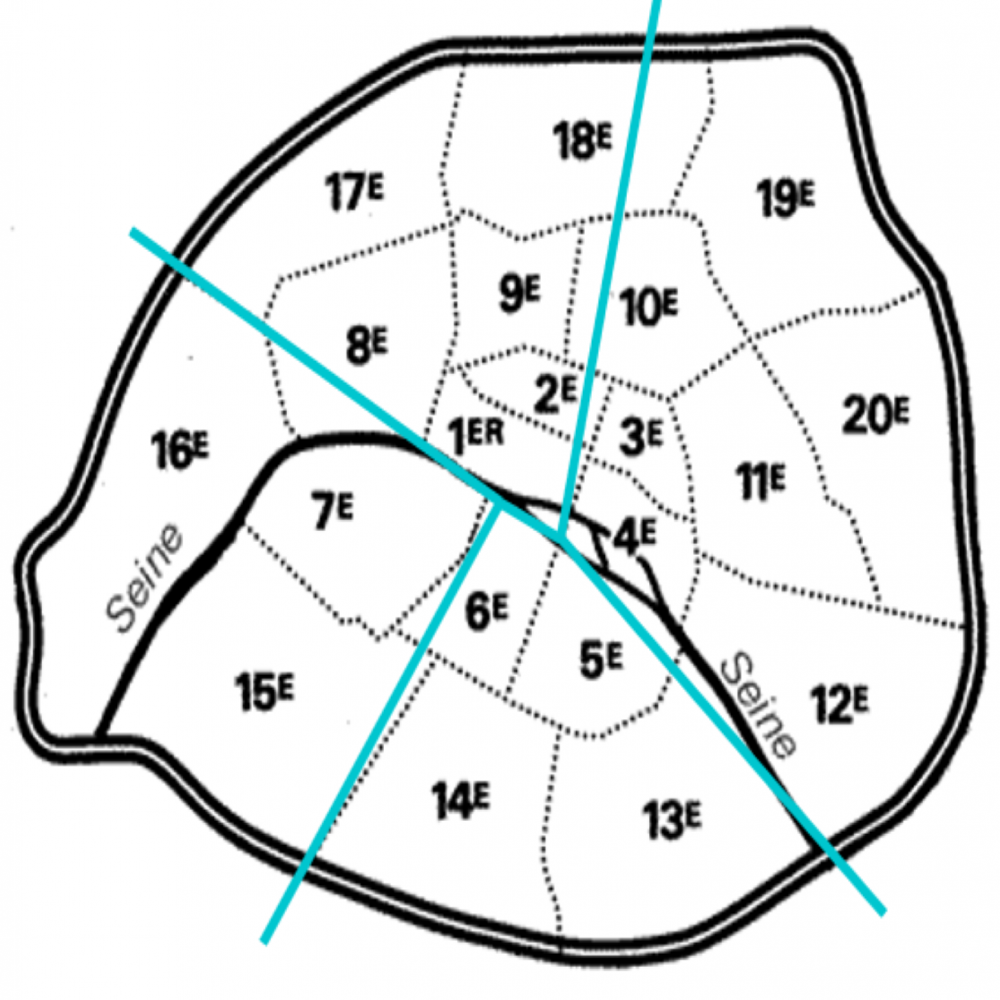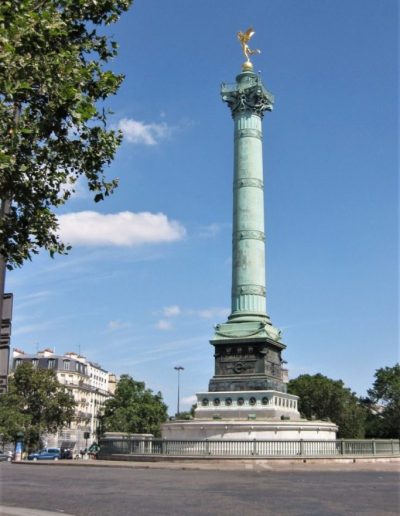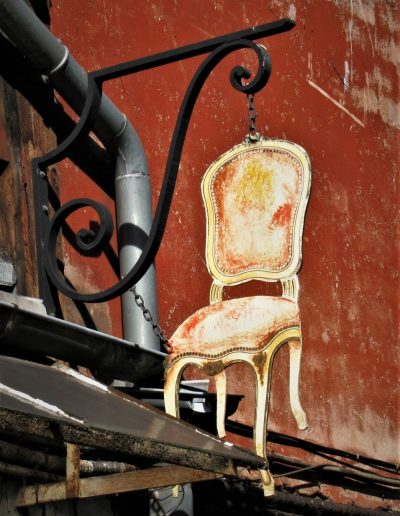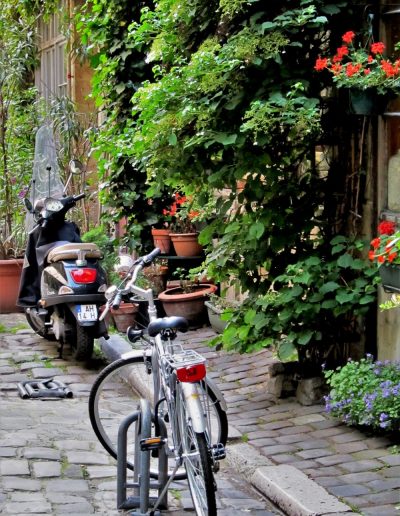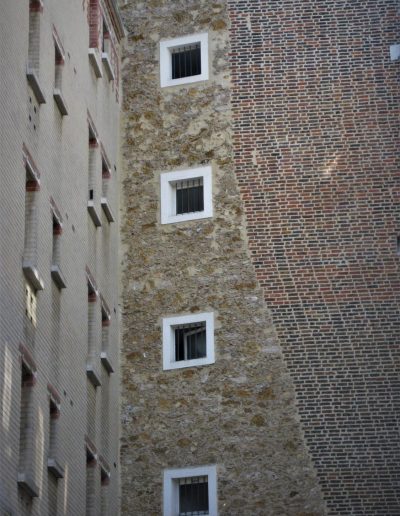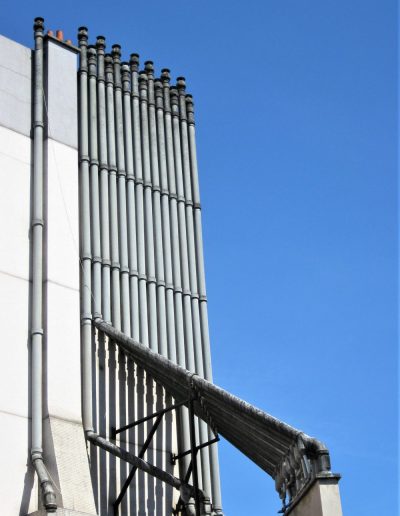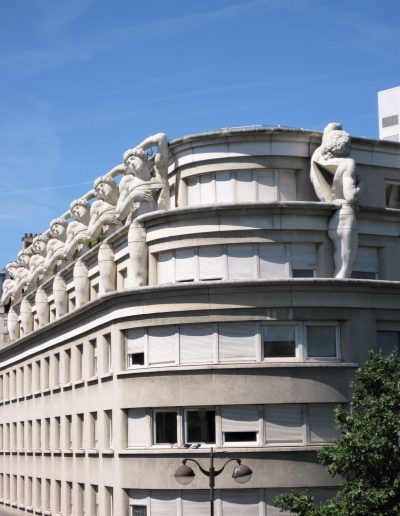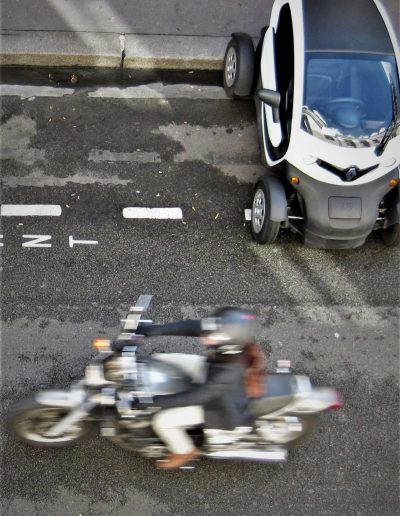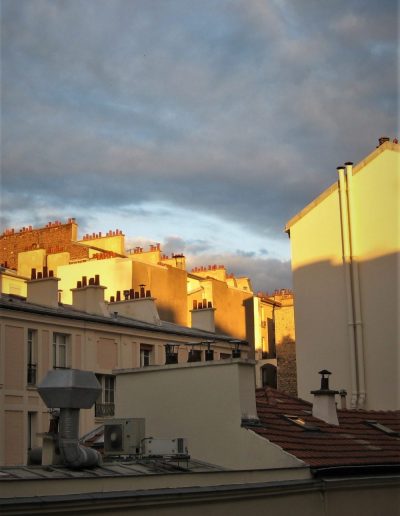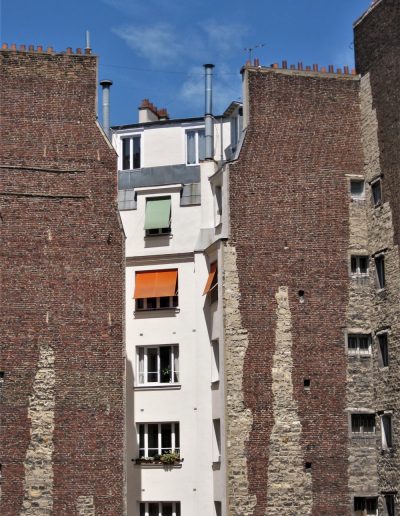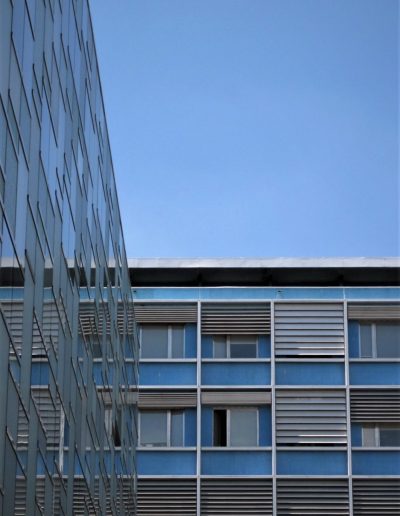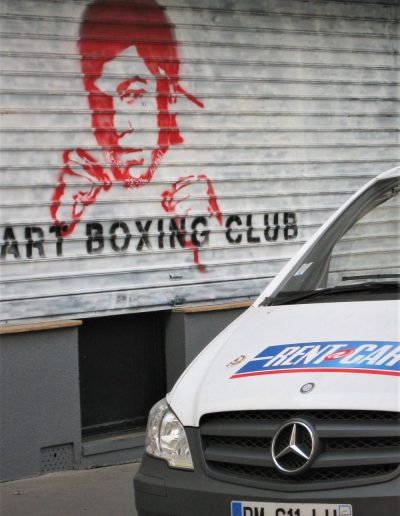Paris
Paris is one of the greatest cities in the world. We’ve spent more than a month there on three trips to France so far. A few things have guided us in getting the most out of our time in this beautiful city.
Twenty into four does go
Paris is so rich in things to do that it can be overwhelming.
It is divided into twenty administrative districts called arrondissements that are numbered in a spiral fashion from the centre to the outskirts. They are referred to as the first, second, third etc, abrreviated in French as 1er, 2e, 3e etc. The river Seine carves an inverted ‘U’ shape through the city. North of the river is known as the Right Bank (Rive Droite), south the Left Bank (Rive Gauche).
Much of Paris as we see it today is the vision of Baron Haussman who was charged by Emperor Napolean III to undertake massive urban renewal of the city in the late 19th C. He built grand boulevards lined with uniform buildings, railway stations, markets, hospitals and theatres, and large parks at the four cardinal points.
The combination of too many things to see, spiralling arrondissements, a winding Seine, and brutally straight boulevards can make it hard to figure how best to navigate Paris as a visitor. We’ve found it useful to grid the city’s ample possibilities into four quadrants to aid trip planning, with the places we’ve visited summarised below. Think of each one as a menu of possibilities for a walking tour(s).
Northeast Paris (arrondissements 3-4, 10-12, 19-20)
- We like to stay in the 11th near Place de la Bastille. There are interesting things to see walking west towards central Paris, north along Canal St Martin, and east along the Promendae Plantee.
- To the west of Place de la Bastille lies the Marais district which has many outstanding buildings. Place des Vosges, Hotel de Sully, Hotel de Sens, and Musée Carnavalet are standouts. Or you can walk along the Right Bank of the Seine which becomes a beach in summer (Paris Plages) between Pont de Sully and Pont Neuf. Continuing west you reach the ornate Hotel de Ville (city hall) fronting onto a large plaza. Nearby is the gothic Tour St Jacques which is all that remains of a 16th C church. A little to the north is the Centre Pompidou, also know as the Beauborg. It’s an outrageous building which houses the National Museum of Modern Art.
- Place de la Bastille is built on top of the Canal St Martin. Following the route of the canal in a northerly direction it surfaces around square Frédérick-Lemaître and flows past Hospital St Louis. Parc de Belleville lies just to the east, then heading south you reach the famous Père Lachaise Cemetery. Continue south to Place de la Nation where Rue Fauborg-Saint-Antoine leads back to la Bastille.
- Just south of Place de la Bastille is the start of walkway called the Promenade Plantee (Coulée Verte René-Dumont) which utilises an old railway line. You can follow it east as far as Bois de Vincennes.
Southeast Paris (arrondissements 5-6, 13-14)
- The Jardins des Plantes (Botanical Gardens) are on the Left Bank, near Pont d’Austerlitz*. Nearby is the Arènes de Lutèce, one of the few Roman remains left in Paris. On a hill overlooking the river are some buildings that trace back to the Abbaye of Ste Genevieve, patron saint of Paris, established by King Clovis I in 502. Tour Clovis is all that remains of an 18th C abbey. St Etienne-du-Mont has a shrine to the saint. The Pantheon was built as a church dedicated to the saint then repurposed during the French Revolution as a mausoleum for distinguished French citizens.
- The famous Sorbonne University has its campus in this district. Close by is the excellent Museum of the Middle Ages in the Abbey de Cluny. Further west is the Odeon Theatre, next to the Luxembourg Gardens where it’s fun to hang out with Parisians on a sunny day. The Luxembourg Palace was built in 1615 and since 1958 has been home to the French Senate. The large 17th C church of Saint Sulpice and the abbey church of St Germain du Pres, with roots going back to 540, stand nearby.
- To the south a sinister looking office block dominates the skyline of Montparnasse. The cemetery of Montparnasse is fascinating to wander, and the entrance to the Catacombs is nearby. Notre Dame du Travail is a quirky church with an Eiffel Tower-like steel interior.
* There’s a useful hop-on-hop-off ferry called the Batobus that has a stop at Jardins des Plantes and another at the Eiffel Tower with seven additional stops in between.
Southeast Paris (arrondissements 5-6, 13-14)
- The Jardins des Plantes (Botanical Gardens) are on the Left Bank, near Pont d’Austerlitz*. Nearby is the Arènes de Lutèce, one of the few Roman remains left in Paris. On a hill overlooking the river are some buildings that trace back to the Abbaye of Ste Genevieve, patron saint of Paris, established by King Clovis I in 502. Tour Clovis is all that remains of an 18th C abbey. St Etienne-du-Mont has a shrine to the saint. The Pantheon was built as a church dedicated to the saint then repurposed during the French Revolution as a mausoleum for distinguished French citizens.
- The famous Sorbonne University has its campus in this district. Close by is the excellent Museum of the Middle Ages in the Abbey de Cluny. Further west is the Odeon Theatre, next to the Luxembourg Gardens where it’s fun to hang out with Parisians on a sunny day. The Luxembourg Palace was built in 1615 and since 1958 has been home to the French Senate. The large 17th C church of Saint Sulpice and the abbey church of St Germain du Pres, with roots going back to 540, stand nearby.
- To the south a sinister looking office block dominates the skyline of Montparnasse. The cemetery of Montparnasse is fascinating to wander, and the entrance to the Catacombs is nearby. Notre Dame du Travail is a quirky church with an Eiffel Tower-like steel interior.
* There’s a useful hop-on-hop-off ferry called the Batobus that has a stop at Jardins des Plantes and another at the Eiffel Tower with seven additional stops in between.
Southwest Paris (arrondissements 7, 15-16)
- The Musee d’Orsay has an art collection specialising in French impressionism that makes it one of the great museums of the world. A number of French national institutions including the French National Assembly are located in this district. The golden-domed church of the Hôtel National des Invalides is a major landmark. It houses the tombs of many French war heroes, including Napoleon. The delightful Musee Auguste Rodin is just to the east.
- Heading west you reach the large, green, space of Champs de Mars, with the Ecole Militaire at one end and the iconic Eiffel Tower at the other. Across the river Seine, Palais de Chaillot wraps its colonnaded arms around the Trocdero Gardens. The right (northeast) wing of Palais de Chaillot houses the fascinating Cité de l’Architecture et du Patrimoine, with interesting perspectives on the Eiffel Tower an added bonus.
- Heading north along Avenue Kleber takes you to the Arc de Triomphe, and the Champs Elysee leads to Place de la Concorde.
- Just south of the eastern end of the Champs Elysee stand the Grand Palais and Petit Palais, remnants of the 1900 Paris Exposition (World Fair). Seeing an exhibition is a good way to experience these venues.
Northwest Paris (arrondissements 1-2, 8-9, 17-18)
- The Cathedral of Notre Dame on Ile de la Cite is the spiritual centre of Paris. In the nearby Palais de Justice is the extraordinary chapel of Ste-Chapelle, with the Conciergerie next door.
- Across Pont Neuf, on the Right Bank, is the church of St Germain l’Auxerrois with historical association to the Louvre Palace. The mighty Louvre Museum is overwhelming and it’s worth having a plan of attack in order to make it an enjoyable experience. The grounds of the Louvre blend into the lively Jardin des Tuileries. In the bottom lefthand corner of the gardens stands our favourite art museum in Paris, the Musée de l’Orangerie.
- North of St Germain l’Auxerrois and the Louvre you’ll find the church of St Eustache, Palais Royal, Place des Victoires, and la Bourse (Stock Exchange). Heading west you’ll see Place Vendome, Opera Garnier, the church of La Madeleine, and the Grands Boulevards with famous department stores Galeries Lafayette and Le Printemps.
- Several blocks further west, near Parc Monceau, the Musee Nissim de Camondo and Musee Jacquemart-Andre give a great sense of Parisian life in the belle epoque (at least for some).
- Rising up to the northeast is the famous district of Monmartre and the Catholic basilica of Sacre Couer, visible from much of Paris.
Northwest Paris (arrondissements 1-2, 8-9, 17-18)
- The Cathedral of Notre Dame on Ile de la Cite is the spiritual centre of Paris. In the nearby Palais de Justice is the extraordinary chapel of Ste-Chapelle, with the Conciergerie next door.
- Across Pont Neuf, on the Right Bank, is the church of St Germain l’Auxerrois with historical association to the Louvre Palace. The mighty Louvre Museum is overwhelming and it’s worth having a plan of attack in order to make it an enjoyable experience. The grounds of the Louvre blend into the lively Jardin des Tuileries. In the bottom lefthand corner of the gardens stands our favourite art museum in Paris, the Musée de l’Orangerie.
- North of St Germain l’Auxerrois and the Louvre you’ll find the church of St Eustache, Palais Royal, Place des Victoires, and la Bourse (Stock Exchange). Heading west you’ll see Place Vendome, Opera Garnier, the church of La Madeleine, and the Grands Boulevards with famous department stores Galeries Lafayette and Le Printemps.
- Several blocks further west, near Parc Monceau, the Musee Nissim de Camondo and Musee Jacquemart-Andre give a great sense of Parisian life in the belle epoque (at least for some).
- Rising up to the northeast is the famous district of Monmartre and the Catholic basilica of Sacre Couer, visible from much of Paris.
Staying one layer out
France is the most visited country in the world, and most of those visitors would go to Paris. It is a busy place and you certainly feel that tourist pressure in the central arrondissements (1er to 7e).
We like to stay in the next layer out. The 11th arrondissement, east of Place de la Bastille, has become our favourite district to stay in. To us it feels a bit more grounded than other parts of the city. It seems like Parisians actually live, eat, drink, and hang out here.
It’s within walking distance of the city centre which lies to the west. And there are interesting areas to explore to the north and further east. We find the 11th a great place to base ourselves.
Going beyond the iconic
A visit to Paris can be completely consumed by seeing the iconic sites, such as Notre Dame, the Louvre, Musee d’Orsay, Eiffel Tower, Champs Elysee, Arc de Triomphe etc. Yet there are so many other great things to see and do.
Here’s a dozen of our ‘second tier’ favourites, three from each of the four quadrants:
- Tuilleries Gardens – Don’t just walk through. Linger and and lounge like a Parisian.
- Musée de l’Orangerie – Upstairs are Claude Monet’s Water Lilies, displayed in the round as he intended. Downstairs is the fabulous Walter and Guillaume Collection, a very personal, tractable slice through an extraordinary period of art history.
- Concert in Ste Chapelle – Attending an evening concert is a great way to absorb the stained glass glory of Ste Chapelle.
- Auguste Rodin Museum – Fluid, physical sculptures in the delightful setting of Hotel Biron and its gardens.
- Cité de l’Architecture et du Patrimoine – An unusual museum in the Palais Chaillot full of casts, copies and models made during the restoration of France’s most famous monuments. With great views of the Eiffel Tower.
- Grand Palais and Petit Palais – We’ve attended exhibitions at both venues which is a great way to appreciate them.
- Luxembourg Gardens – A delightful green space much loved and used by Parisians.
- Museum of the Middle Ages – Located in the Hôtel de Cluny which is partially constructed on the remnants of 3rd C Gallo-Roman baths. The tapestries of The Lady and the Unicorn are just sublime.
- Cemetery du Montparnesse – Pere Lachaise is the big name Paris cemetery, but what Montparnasse lacks in location it makes up in content.
- Place des Vosges – Just a perfect urban square. The original in Paris, and the best.
- Canal St Martin – Following the canal from the Seine to La Vilette and beyond provides an interesting slice through this part of Paris.
- Promenade Plantee – The original urban walkway reusing an elevated railway line, it provides a unique perspective Parisian life in the 11th arrondissement.

